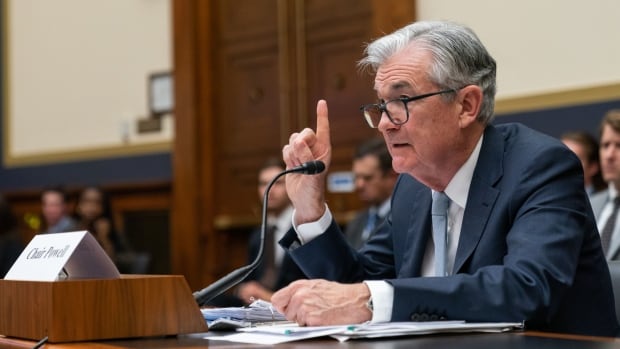The Federal Reserve is expected to raise its benchmark interest rate for the fifth time this year on Wednesday, as the world’s most important central bank tries to bring down inflation without sparking a recession.
The U.S. central bank is widely expected to raise the upper bound of its benchmark interest rate to four per cent at 2 p.m. Eastern time on Wednesday. It’s widely expected to raise the rate by three quarters of a percentage point, bringing the total to 375 basis points in less than six months — far and away the largest stint of rate hikes on record.
That the Fed is moving so aggressively to try to tame red-hot inflation speaks to how vexing and stubborn a problem it is proving to be.
After slashing its rate to functionally zero in the early days of the pandemic, two years later, central banks around the world are scrambling to raise lending rates to cool demand for goods and services and get runaway inflation under control.
The Bank of Canada raised its rate last week, and it bucked expectations by only raising by 50 basis points, from 75 previously. That was taken as a sign that Canada’s central bank is getting close to the end of its rate-hiking cycle.
Bank governor Tiff Macklem did little to dispel that narrative in testimony to the Senate Banking Committee on Tuesday evening.
“This tightening phase will draw to a close,” Macklem said according to his prepared remarks. “We are getting closer, but we are not there yet.”
How many more?
At 3.25 per cent, the Fed rate is already at its highest level since the financial crisis in 2008. Another three quarters of a percentage point would take it to four per cent — within striking distance of the 5.25 per cent peak hit in 2007. You’d have to go back to the year 2000 to see rates any higher than that.
Karl Schamotta, chief market strategist at foreign exchange firm Corpay, says Fed chair Jerome Powell has to thread the needle of showing the central bank is committed to bringing down inflation while also signalling that the pace of rate hikes is going to slow soon.
“The big question for markets is how Jerome Powell will manage the accompanying communications conundrum,” he said, of “somehow telling investors to expect a slower pace of rate hikes without triggering a drastic loosening in financial conditions.”
No matter what happens on Thursday, investors are expecting at least one more rate hike before the end of the year. But their focus is increasingly moving toward when the Fed might signal it thinks it has hiked enough, and will either stand on the sidelines or even start cutting again. Rate hikes typically take between six to 24 months to filter through the economy, so it’s unclear what the ones already implemented have done or will continue to do.
“When real interest rates were deeply negative, it was easy to argue for a fast pace of hiking,” said Steve Englander, a strategist with investment bank Standard Chartered. But now that consumer spending is slowing and the housing market has gone ice-cold, the job of bringing down inflation is much harder.
“Fed officials are probably getting an earful from their business contacts on deteriorating prospects, but there are also anecdotes on full flights, restaurants and hotels,” Englander said, adding that markets are currently expecting another hike of at least half a percentage point at the bank’s next policy meeting in December.
Parsing Powell’s words
Beyond the number itself, economists and market watchers will pay more attention to the exact words the central bank uses to describe its outlook for the near term.
Englander says the tone of Powell’s language will say a lot about what to expect from here on out. If Powell suggests the bank is “comfortable” with its projections and “hopeful” that inflation has peaked, that’s a sign the end of the hiking cycle is nearing its end.
If, on the other hand, they say something along the lines of, “We will give the economy a chance to reflect hikes to date but have no strong view on whether or not we go higher,” that’s the Fed’s way of saying they aren’t done yet, Englander said.
In their recent pronouncements, Fed officials themselves have certainly leaned toward suggesting the bank’s rate would have to get closer to about five per cent before they are confident they’ve done enough.
“We need to see actual progress in core inflation and services inflation,” Neel Kashkari, president of the Federal Reserve Bank of Minneapolis, said recently. “And we are not seeing it yet.”


